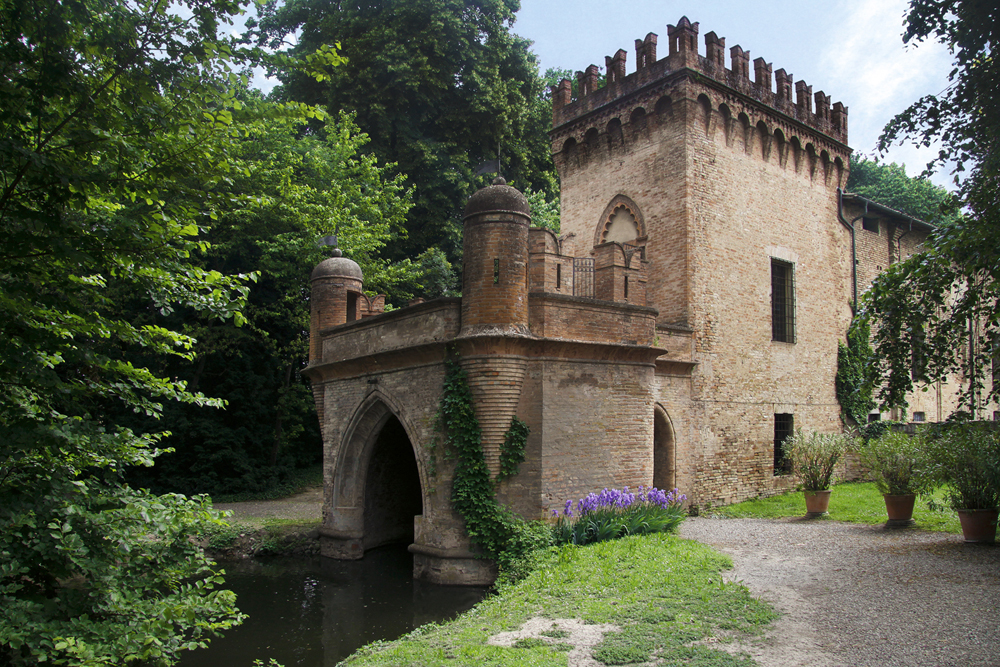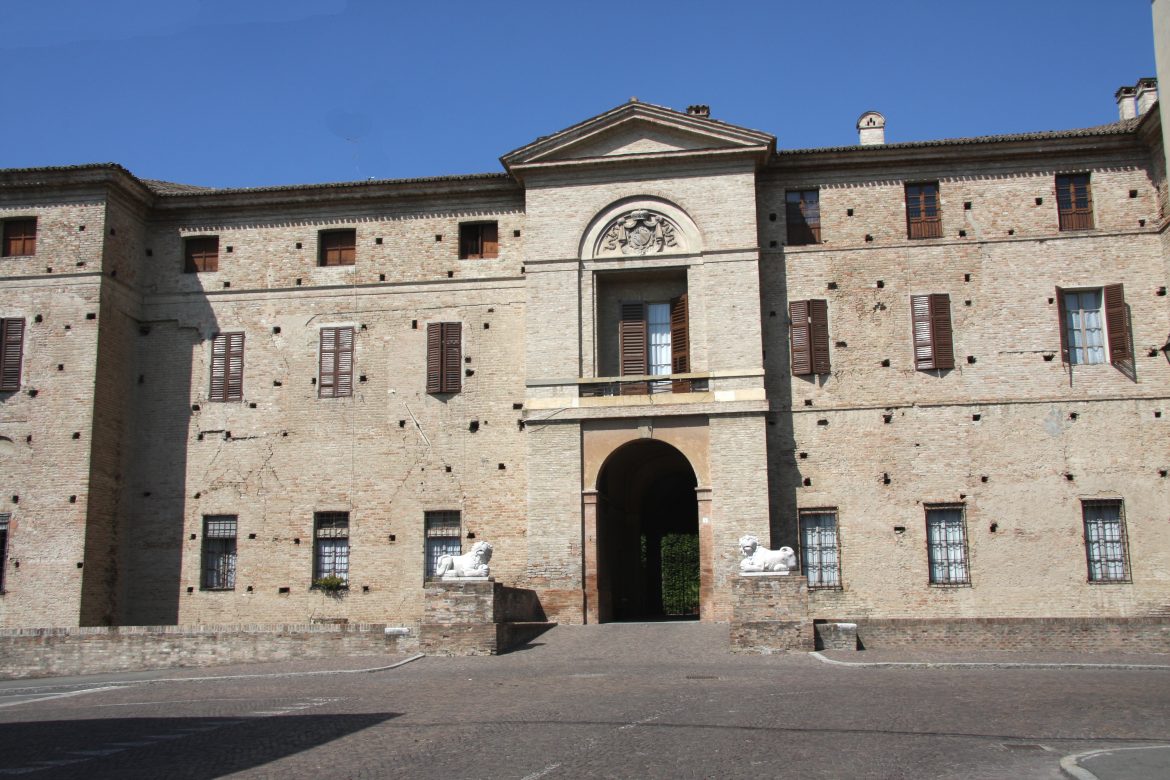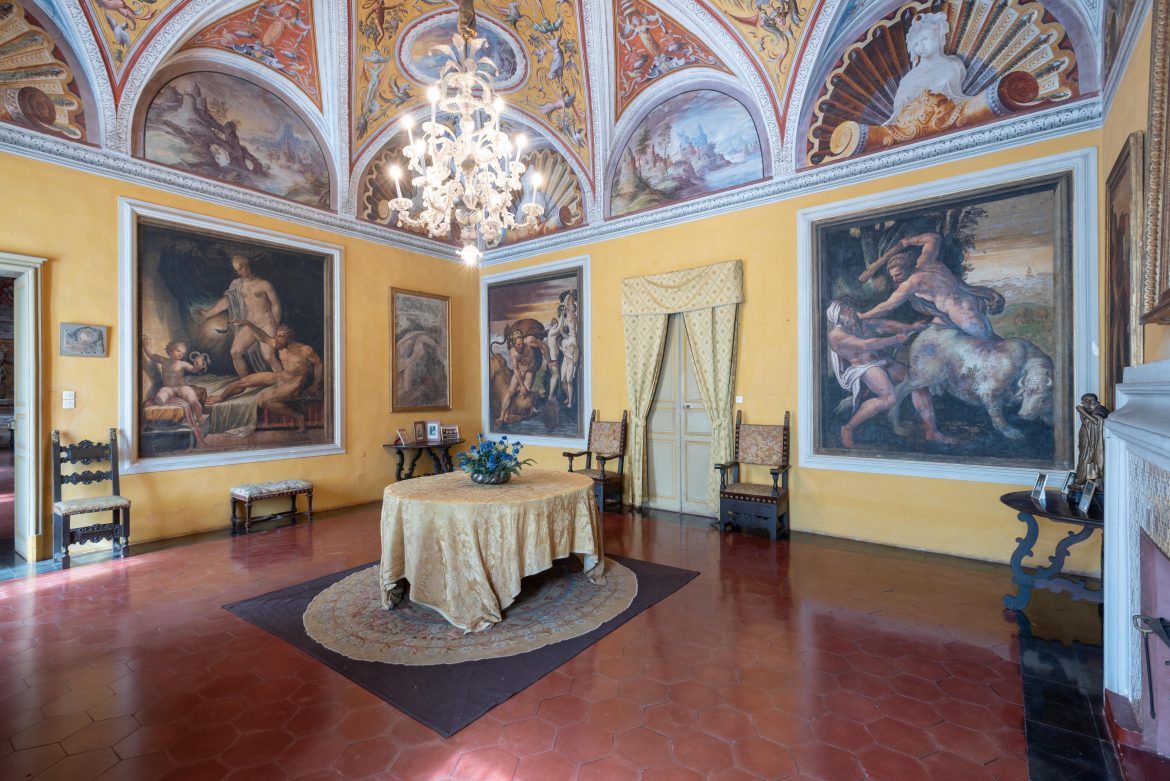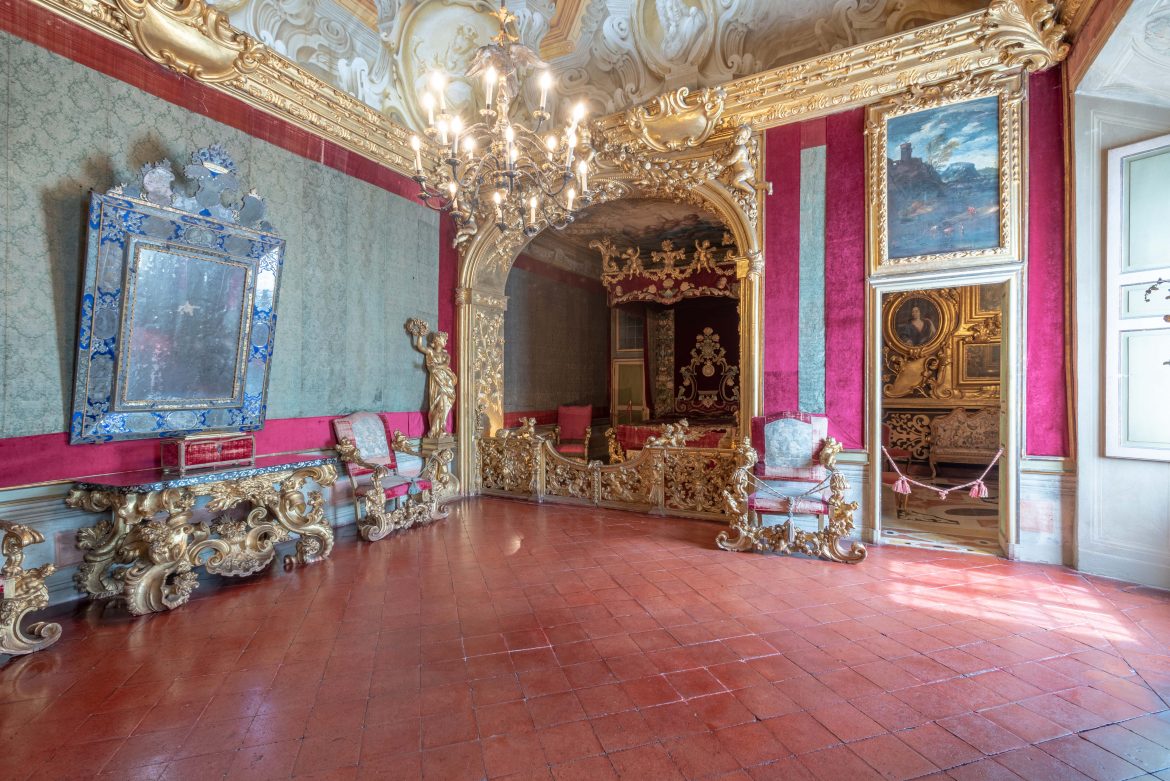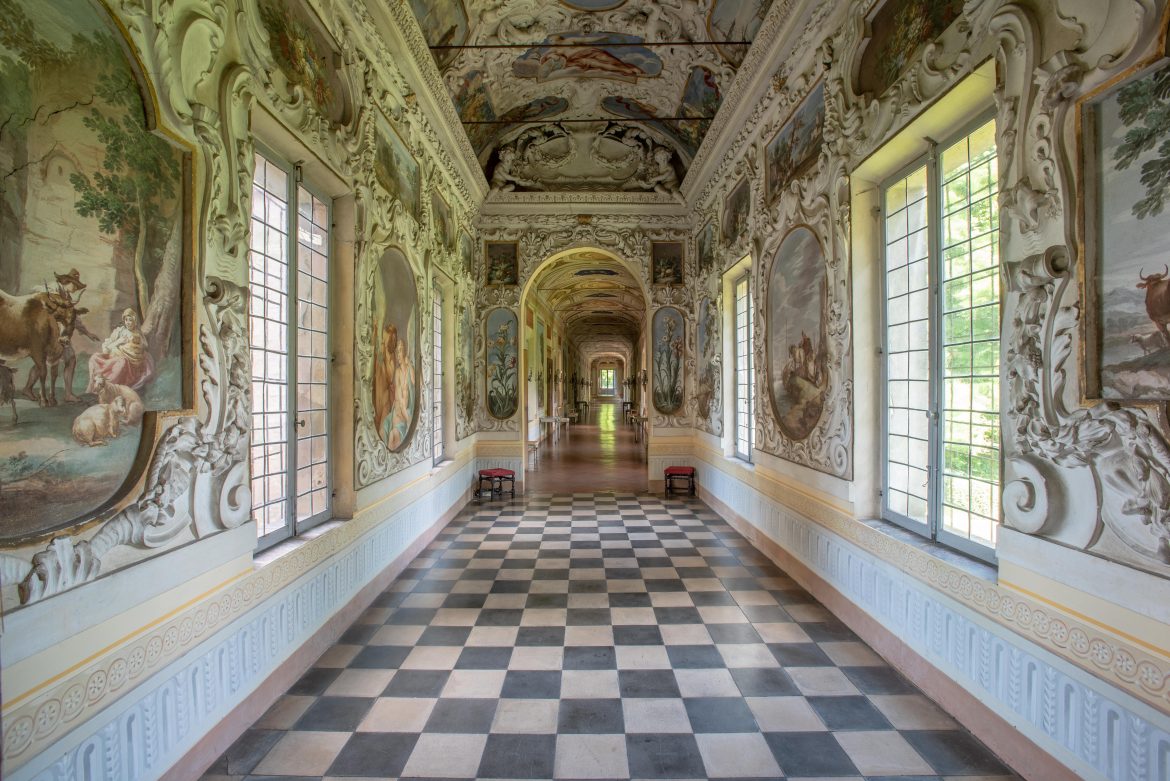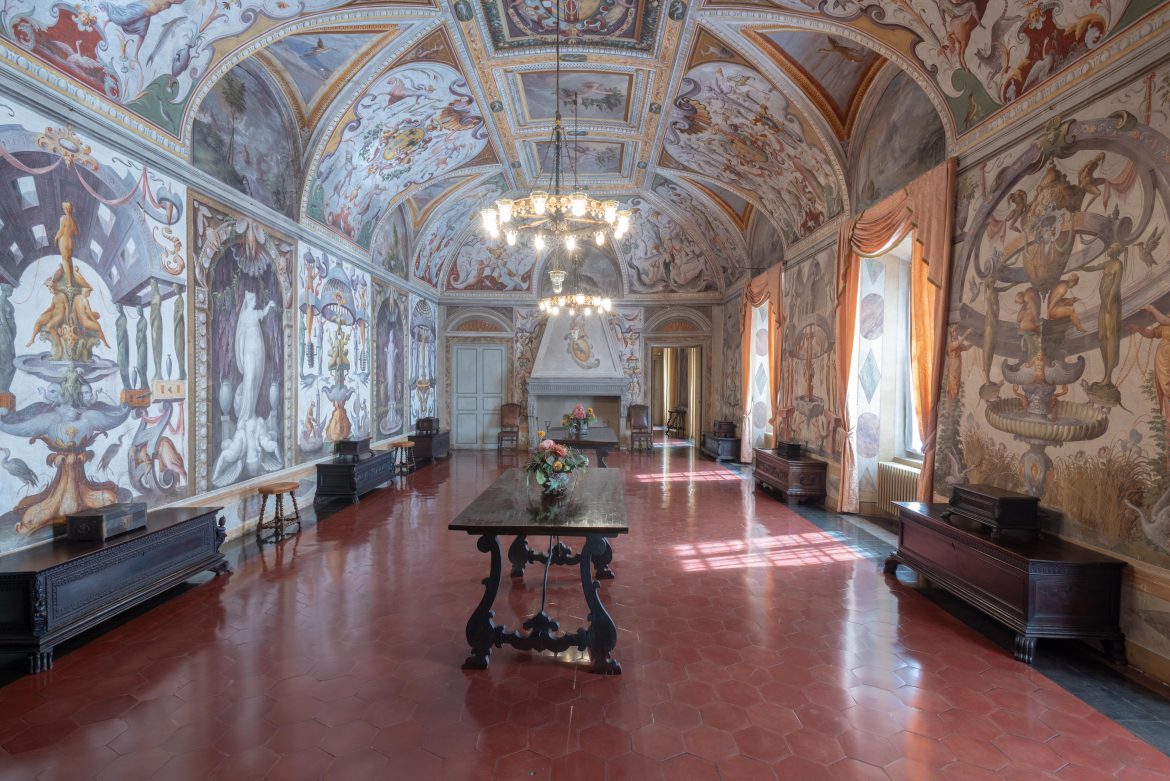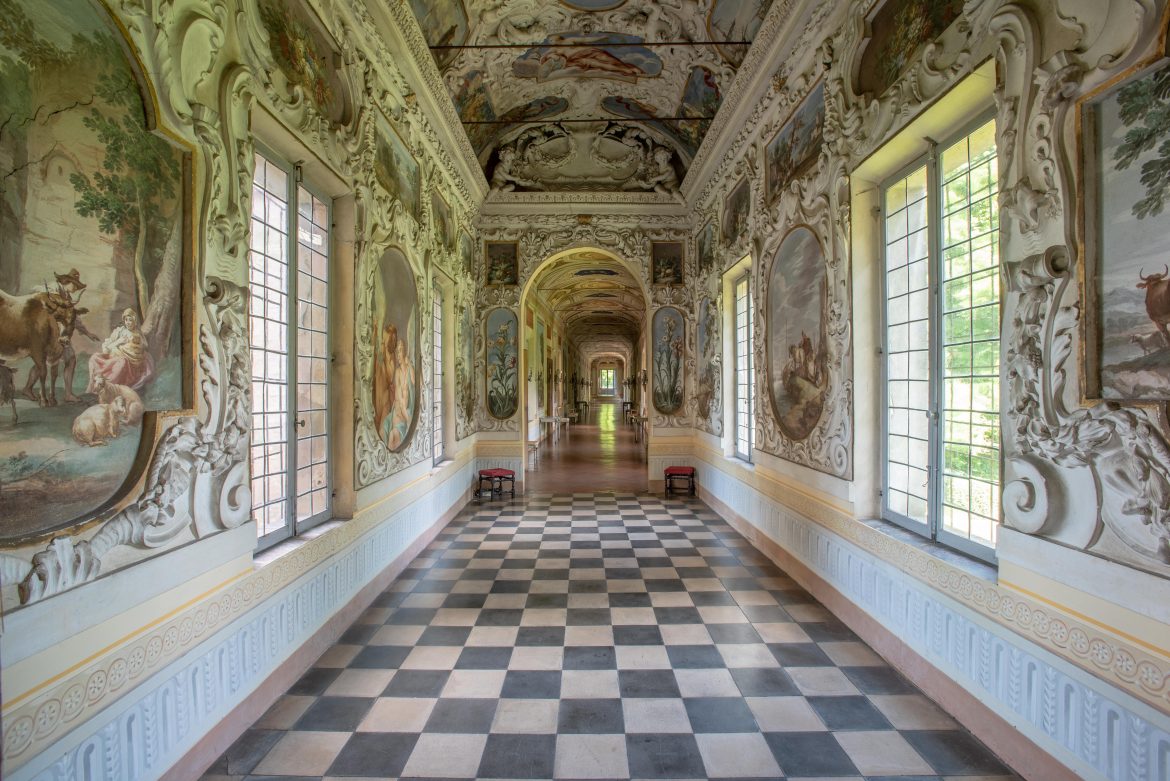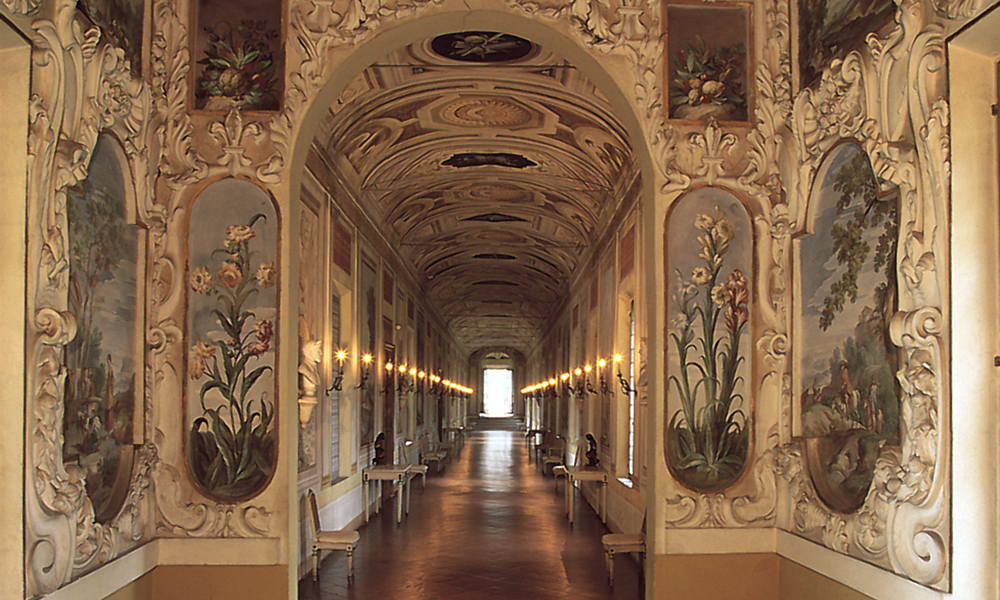“The Lady of the Lowlands”: this is the nickname given to the old Soranea, today known as Soragna, situated on fertile ground in the lowlands of Parma, located by the Stirone stream, in the slice of land Giovannino Guareschi described as ‘wedged between the Po and the Apennines’.
The area has been inhabited since the Neolithic period, and from medieval times was a possession of the Lupi family and was an imperial fief.
Soragna is famous for its fortress, built in 1385 by the Meli Lupi princes, and still belongs to their heirs to this day. The “impregnable castle”, as it was known, is rich in frescoes, stucco and decorations, all works of famous artists. The legend of the ghost of Donna Cenerina surrounds the castle: she was assassinated by her brother-in-law in 1573, and it is said that her ghost haunts the rooms of the fortress, and her appearance would indicate bad fortunes for the Meli Lupi family.
The fortress was transformed between the 16th and 17th centuries into a baroque-style noble dwelling, and was further enriched by the architects Angelo Rasori in the 18th century and Antonio Tomba in the 19th century. The surrounding park was transformed into an English-style garden in 1833 by architect Luigi Voghera.
Inside the fortress there are numerous rooms with frescoes, including the Sala delle Fontane [Fountain room], with frescoes from Cesare Baglione; Sala Gialla [Yellow room] also known as the Nicolò d’Abate room, which features four frescoes on canvas depicting the mythologies surrounding Hercules’s life. Then there is the Sala Rossa [Red room] with six paintings from the painter Brescianino; Sala degli Stucchi [Stucco room], characterised by its baroque stuccos produced around 1696 by brothers Ferdinando and Francesco Galli di Bibbiena, and the long Galleria dei Poeti [The Poet’s Gallery], adorned with family portraits and precious furniture.
As well as the fortress, the urban area of Soragna also presents several architectural works dating back to the 14th century, most of which are thanks to the generosity of the lords of the area. The Beata Vergine del Carmine church, with the Carmelite convent attached, was built in the second half of the 1600s, while in the main square you can find the Oratory of Saint Antony of Padua, a baroque charm designed by Francesco Galli, also known as ‘il Bibiena’, at the end of the 17th century.
Also, near the centre we can find the monumental Santuario della Sacra Famiglia[Sanctuary of the Sacred Family] also known as the church of St James [San Giacomo], built between 1755 and 1769, where there is a statue of the Madonna sculpted by Lorenzo Aili, and an important organ built by the Serassi brothers.
The growing Jewish community took residence in Soragna at the end of the 16th century, and built a synagogue decorated according to neoclassical tastes, which today can be visited alongside theFausto Levi Jewish Museum. The museum hosts numerous ancient objects, including a scroll of the Torah dating back to 1594, and clothing from a Sidur from the 1700s as well as a silver blanket.
The town centre is located between two parks – that of the Meli-Lupi fortress, and the public Remembrance Garden, while the tree-lined avenues give the impression of nature in the urban area. These lead us to the Parmesan Museum, located inside an 1800s creamery, which was inaugurated in 2003 and hosts numerous objects dating back to the 19th and early 20th century linked to the production of the famous Parmigiano-Reggiano cheese.
Linked to the Parmesan Museum, you will find a museum of rural heritage, with a wide collection of relics linked to the daily life and agricultural work of the residents of this part of the lowlands. Since 1977, thanks to its links with tradition and the territory, Soragna has played host to the Artisan, agriculture and trade show [Mostra dell’artigianato, agricoltura e commercio]. For three days over the last weekend of April, the town comes to life with demonstrations of agricultural machinery, both new and old, farm animals, models, relics, horticulture, food, wine and much more.
Just outside of Soragna is the hamlet of Diolo, with its imposing church dedicated to Saint Catherine of Alexandria. It was originally built at the beginning of the 16th century, but was then demolished in 1914 due to its state of disrepair, though the bell tower was saved. It was rebuilt in neogothic style with tall steeples and stained-glass windows a few hundred metres south of the original building, overseen by architect Alfredo Provinciali, and was completed in 1917. In the bell tower of the “old” church, the“Centro del Bosaccio Giovannino Guareschi” museum was built, which is home to a series of objects, testimonies and written passages dedicated to the father of Don Camillo and Peppone. In some of Guareschi’s stories he mentioned the Boscaccio di Diolo where his grandfather lived.
If on your visit to the area you feel a sudden onset of thirst, look no further than the “Fountain of Youth” in Carzeto, a small hamlet near to Soragna. Carzeto is not more than a handful of houses, a church and a square, but at the centre of the square you will find the fountain. In 1933 the residents of Carzeto complained about the scarcity of water, and the municipality considered installing a well. A dowser from San Secondo, thought of as part-magician and part-scientist, identified an aquifer. As soon as the ground was opened up, an ample jet of water emerged, which was contained with a steel structure with four “taps”. In the few square metres around the taps, you can feel the soul of Carzeto, proud of its ‘fountain of youth’. They are so proud of the fountain that on entry to the area you will see a logo of it on the road signs that welcome you.
